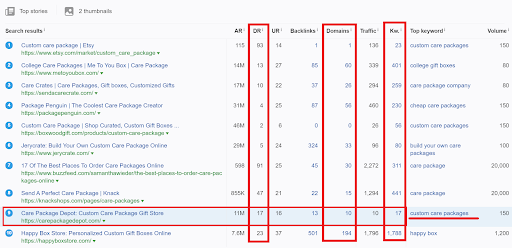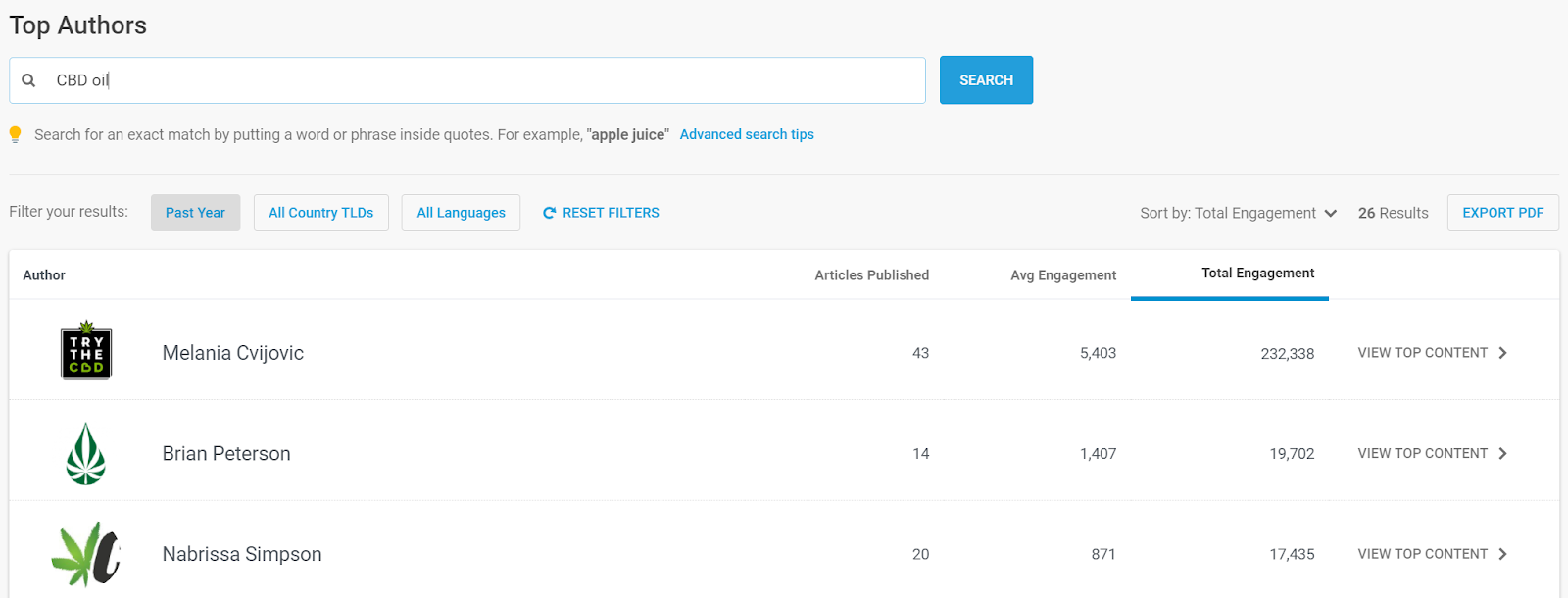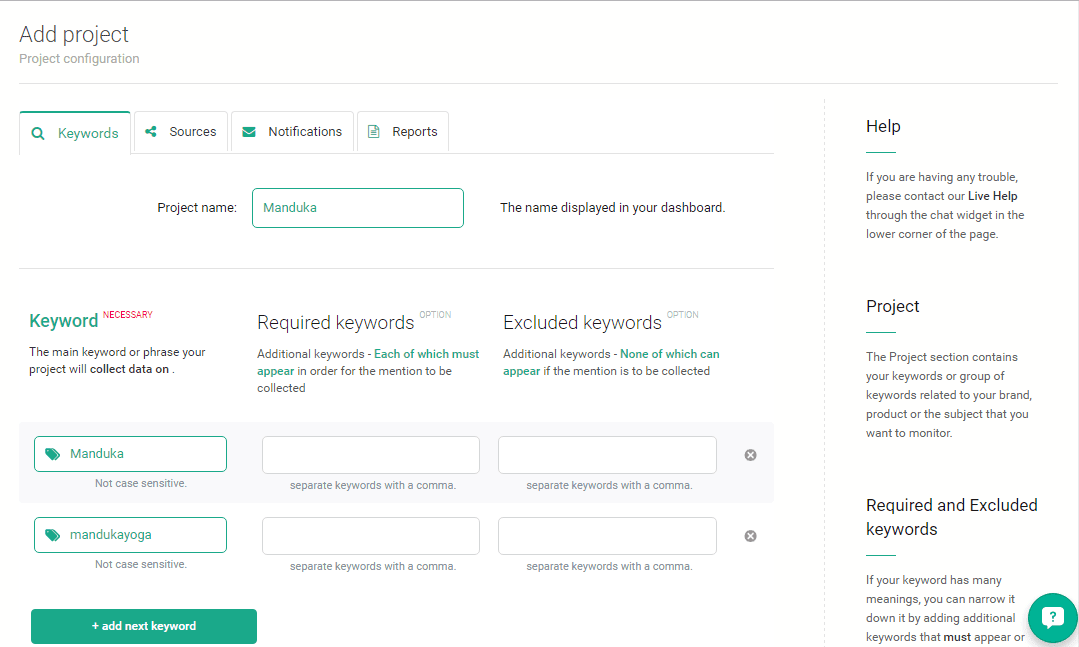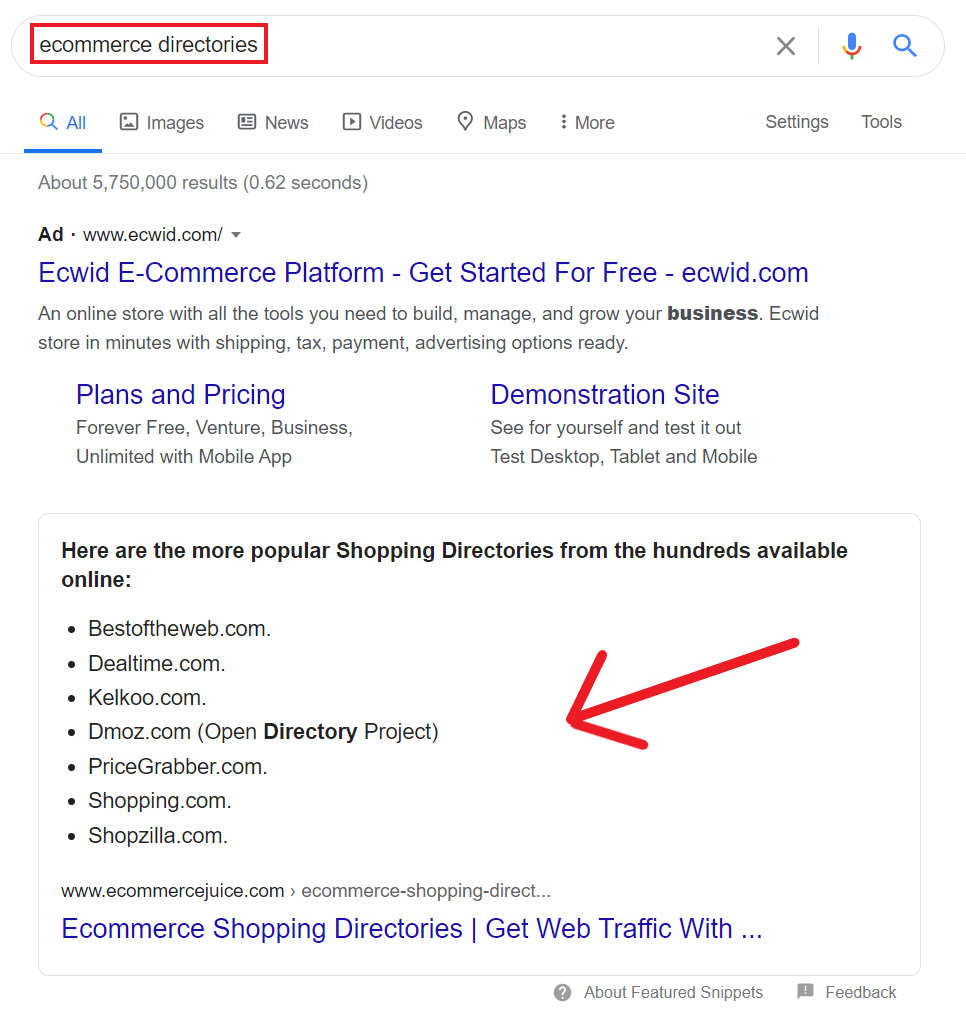Ever wanted to have your online store pop up on the first page of Google?
I bet it wouldn’t hurt your business—quite the opposite, in fact.
Attracting organic traffic is (almost) free and could help you save up tons of cash that you now have to spend on advertising.
However, with more than 820.000 merchants on Shopify alone, winning a high position on Google is more challenging than ever.
You see, building high quality backlinks to your product pages (and your content) is what can help you outrank your competitors and make your store more visible on Google.
So, in this article I will guide you through the process of creating an effective eCommerce link-building strategy and share with you a few tactics you can implement right away.
Ready? Let’s begin!
How to design an efficient link-building strategy
Firstly, let’s quickly go through the steps you should consider when starting out with link-building.
1. Define clear goals and metrics for your campaigns
To know whether you are succeeding after a few months of building links, you need to set SMART goals and right metrics for your campaigns.
Why build links to your online store at all?
At least a few reasons come to mind:
- Improving search visibility and bringing organic traffic
- Bringing free referral traffic
- Positioning oneself as an established company
- Building a network of bloggers and influencers to collaborate with
Keeping all the above in mind, you can move on to deciding whether you want to build links to your store’s homepage, your products’ pages, or maybe your blog?
Start by dividing page targets into separate campaigns—for example building backlinks under your brand’s name to your homepage first.
Next, make a list of keywords for which you want to rank your page(s). Choose them based on their search volume and keyword difficulty potential. You can check it using tools such as Ahrefs or SEMrush (more about tools later).
Finally, to know how many backlinks you need to succeed (= outrank your competitors), you should take a look at the current SERP for your chosen keywords and analyze the backlink profile of those top ranking pages.
For example, here’s how this process could look like for an eCommerce business—Care Package Depot offering personalized gift boxes. Let’s say they want to rank their product page for “custom care package” keyword.
They start by analyzing SERP results and spying on the competitors.
Judging by the number of referring domains, domain rating and keywords of the top 7 ranking pages, Care Package Depot can roughly estimate that they need at least 30 quality links to move up their rank higher.
Pro tip: To further understand why SEO is important for your brand efforts, check out: Why SEO Is a Critical Part of Every PR Strategy.
To put it simply, these estimations take into account the strength of competitive pages in the eyes of Google and can point out ways to outrank them with a solid content and SEO strategy.
2. Create content assets
Speaking of which—let’s talk about creating linkable content.
So, you got your store’s homepage and product pages as your cornerstone content—awesome. But why would anyone want to link to them?
That’s a question to keep in mind when designing your link building strategy. To get other websites to give you a backlink, you need to create content that’s valuable for them enough to link to it.
We call this creating “a linkable content asset”.
It can take many forms—from informative infographics, through videos to articles with statistics about your eCommerce niche. This is the kind of content that other websites (and your customers) find useful and worth sharing and linking to.
This can also take the form of a press release that you can share online and thus enhance your PR strategy and collecting brand’s mentions.
3. Choose the right tools
Next, you need to equip yourself with the SEO tools that can help you both – to define reasonable goals, spy on the competitors, and track your progress.
Depending on your budget, there is an abundance of tools to choose from. The free options include:
- Ahrefs Backlink Checker
- Moz Link Explorer
- Google Search Console
- Google Keyword Planner
- Answer the Public
- Keywordtool.io
You can use them for both—keyword research when preparing your content assets, and then for your link building campaigns.
When your SEO efforts start to pay off, you can move on to investing into paid, more advanced tools such as SEMrush or Nightwatch.
4. Track and measure progress
Finally, it’s crucial that you monitor your link building efforts on a regular basis.
Depending on the tool, you use—make sure to set up the alerts for new and lost backlinks, like this one from Ahrefs.
Also, don’t forget to monitor the average position of keywords you want to rank for and track changes that happen when you build links for given anchor texts.
6 Powerful eCommerce Link Building Tactics
Now, let’s take a quick look at the link-building tactics that can secure some juicy backlinks for your store’s target pages.
1. Start the blog
“My business is about selling stuff, not writing articles about them”—I heard one eCommerce business owner claim.
Wrong.
Producing SEO-optimized content around your products is what can help you sell more, reduce advertising costs (in the long run), and build a loyal community of customers. All-in-one.
This is why launching a blog should be the first step in helping you create linkable content that will help outrank your competition.
Here’s how a booming eCommerce business selling custom underwear—Lily of the Valley, is using their blog to educate their customers and promote their products at the same time.
They create content that can be later on pitched and linked to from related blogs. They also promote their blog on social media to raise more awareness and enhance PR.
Lily of the Valley invites niche influencers to guest post on their site which usually means also scoring a backlink and a mention from a site of the befriended influencer.
Starting a blog is thus the first step in ensuring that your link building efforts yield success.
Pro tip: Want to understand how content marketing can help your eCommerce business succeed? Read: Content Marketing and E-commerce: 15 Tips for Leveraging your Online Sales
2. Leverage the power of video
The famous “Will it blend?” video campaign launched by Blendtec went viral and made the company famous across the globe.
It’s probably one of the best examples of how powerful video can be for your eCommerce brand marketing (including your SEO).
Blendtec created a separate website just to ride the wave of their “Will it blend” success. This move was brilliant because other sites started linking to them organically when embedding Blendtec’s videos on their pages.
Fast forward a few months, and Blendtec’s target site with videos has over 93.000 backlinks pointing to it! Crazy.
As you can see, video content could serve as a great linkable asset that would promote your products and help your Google rankings, too.
The key in leveraging the power of video is creativity.
Your videos can be entertaining, educational, or both.
Think of how you can showcase your products or your brand in a way that will make other people talk about it and share it with their network. From there, it’s just a step away from convincing website owners in your niche to link to your videos in their own content.
3. Collaborate with bloggers and influencers
Speaking of collaborations—the essence of link building really comes down to relationship building.
As an eCommerce business owner, you’ve probably heard of influencer marketing. You see, working with bloggers and influencers from your niche is a great opportunity to score a backlink.
Instead of just mentioning your products on social media, they could also write about your brand on their blog (and link to you). Additionally, you might want to connect with writers who publish articles about your niche on other websites—and ask them to mention your products or your brand in their posts.
Use a tool such as Buzzsumo to find relevant people and send them a friendly email asking to collaborate with you. For example, if you sell CBD oil, you can type it and get a list of people writing about CBD online.
Then all you have to do is contact them via email (you can use an email finder tool) or via social media.
If you want to scale your link building outreach game, consider investing into email outreach tools such as Pitchbox.
Pro tip: If you’d like to learn more on leveraging the power of influencer marketing for your brand’s success, take a look at this resource: Here’s How to Rule Media with This Influencer Marketing Strategy.
4. Create shareable infographics
As mentioned before, infographics can serve as another type of a linkable content asset.
If you are tight on budget, consider tools such as Canva to create them. Here again, your visual content needs to be worthy of a share. It shouldn’t be all about your product (especially if you are just starting out).
Instead, think of an infographic related to your brand’s niche that’s informative, entertaining, or even shocking.
Here’s an example of a skin care company which created an educational infographic related to choosing the right hair color depending on a person’s eyes and skin shade. This is both—helpful and shareable which can easily score backlinks on beauty-related blogs and websites.
Once you have your own visual content ready, go ahead and email relevant websites that write about this topic. Pitch your infographic as a valuable resource they could add to their content, and—voilà you just scored a backlink.
5. Find unlinked mentions of your brand
Another strategy to use is scanning the web for already existing mentions of your brand which are unlinked or have a no-follow attribute assigned to them.
Here again, web monitoring tools such as Mention or Brand 24 could come in handy. You can set up the alerts and get email notifications every time someone writes about you online. Here’s an example of it for Manduka – a company selling yoga mats.
Every time someone mentions Manduka online, the person responsible for branding and outreach can send an email and ask for a backlinks under the brand’s name.
Simple as that!
6. Get listed on directories
Finally, an easy way to get a brand mention and a backlink is to submit your eCommerce business to relevant directories. Whether it’s a reviews site, or a list of companies from your niche, this tactic is a good starting point.
No clue where to find such directories?
Begin with simply googling “ecommerce directories” and keep narrowing down your options as you go.
Most popular directories usually have high domain ratings which makes them very trustful in the eyes of Google. A backlink from a few of them will help your store’s website be seen as trustworthy, too.
Thus your ranking position will move up.
Building links for eCommerce sites – the ultimate tip.
All in all, building backlinks is a backbone of any successful SEO strategy, no matter the industry.
Acquiring quality backlinks for eCommerce companies can be a tough nut to crack if you don’t have the right strategy in place.
One thing you need to keep in mind is this—start by picking a tactic that can bring most value with minimum effort and get a feel of what link building is all about.
Keep scaling your efforts and monitor your progress to see more and more people coming through organic channels. Experiment and adjust your strategy as you go.
Good luck!
Hazel Raoult is the Marketing Manager at PRmention, a digital PR agency for SaaS and Tech Businesses.










